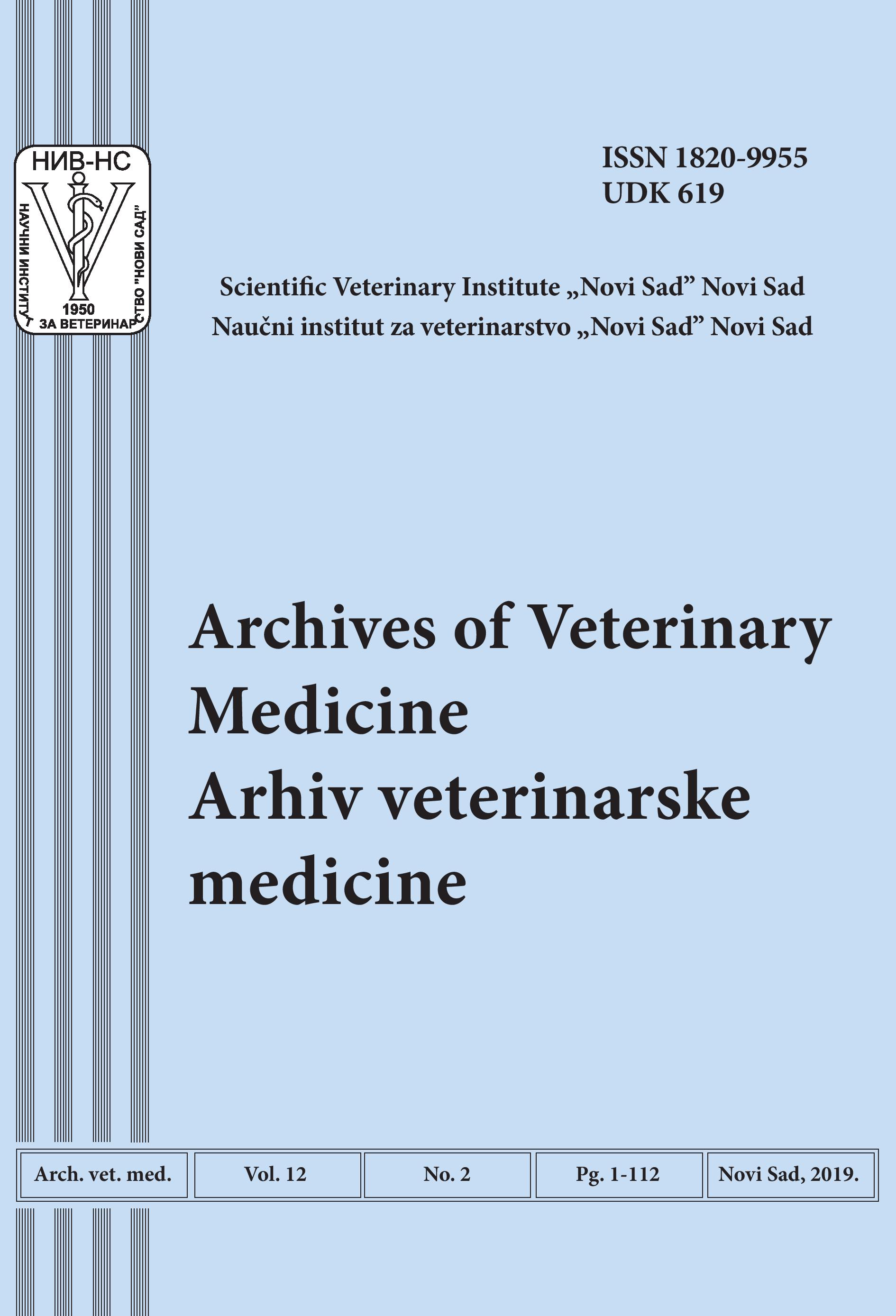Abstract
Th ermophilic Campylobacter spp. are the leading cause of zoonotic enteric disease in Europe and USA. In Serbia, it has an upward trend in human population. Th e disease is usually indirectly transmitted to humans through the consumption of food contaminated by the faeces of infected animals. Th e aim of this paper was to analyze data on the prevalence of Campylobacter spp. in poultry meat production chain and the risk for the development of the disease in humans. Th e Campylobacter jejuni/coli was identifi ed at farm level in 73.3% of poultry, 66.6% calves and 58.3% pig samples of already ill or suspected cases. Clinical manifestation of the disease in birds can be expected if an additional immunosuppressive factor is present. Artifi cial infection of healthy chickens with 6.77 log cfu C. jejuni per chicken on day 21st of life leads to 5.26 log cfu/g faeces aft er only fi ve days with a tendency to decrease during the next 18 days. Although chilling and freezing may signifi cantly reduce Campylobacter contamination of carcasses, it cannot completely eliminate the initial contamination. According to our experimental results the prevalence of Campylobacter contaminated chickens from positive fl ock appears to drop from 100% live birds (with 3.02 log cfu/g faeces) to 50% of chicken carcasses. Contamination of the carcasses depends on initial contamination of live birds, good hygiene practices and
good manufacturing practices. Th erefore, high variability in contamination of carcasses can be considered; prevalence range from 11.43 to 90.00% of
carcases was established in various slaughterhouses. At retail, Campylobacter was detected in 18.8% poultry meat samples and 10.0% samples of other
meat types. Campylobacter is frequently found in the entire production chain of poultry meat and represents high risk for consumers’ health.
Arhives of Veterinary Medicine is an Open Access Journal.
